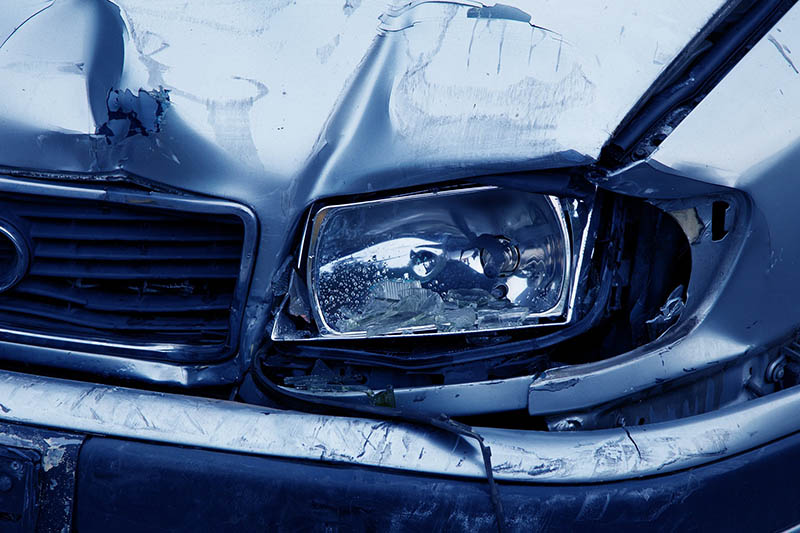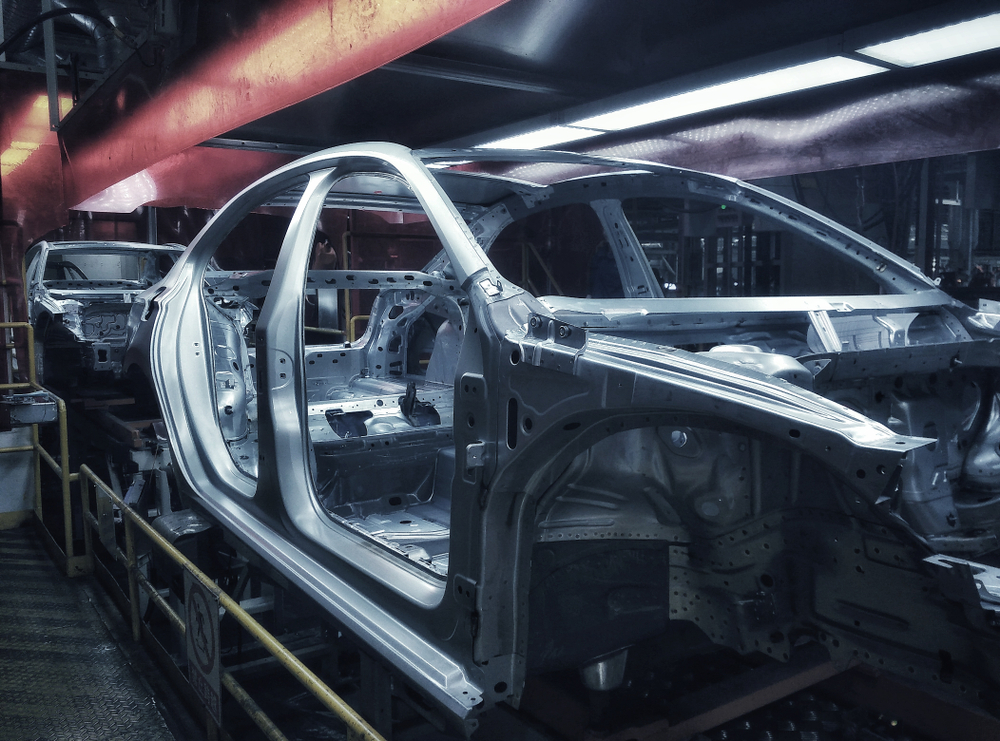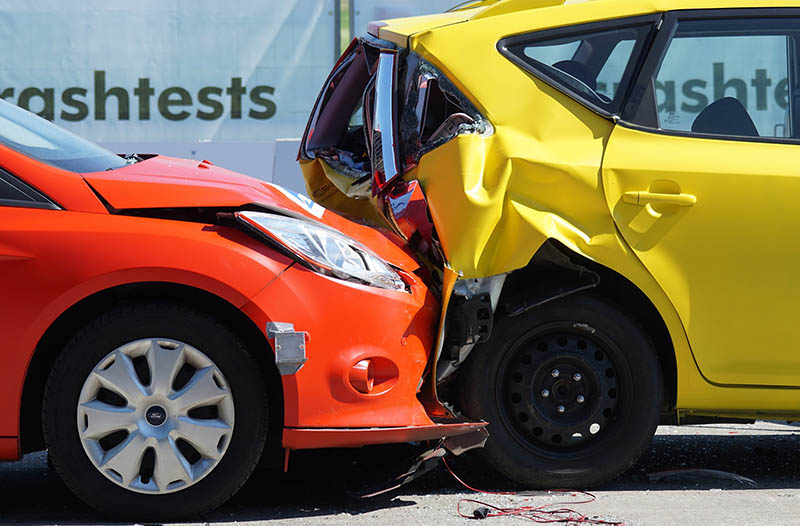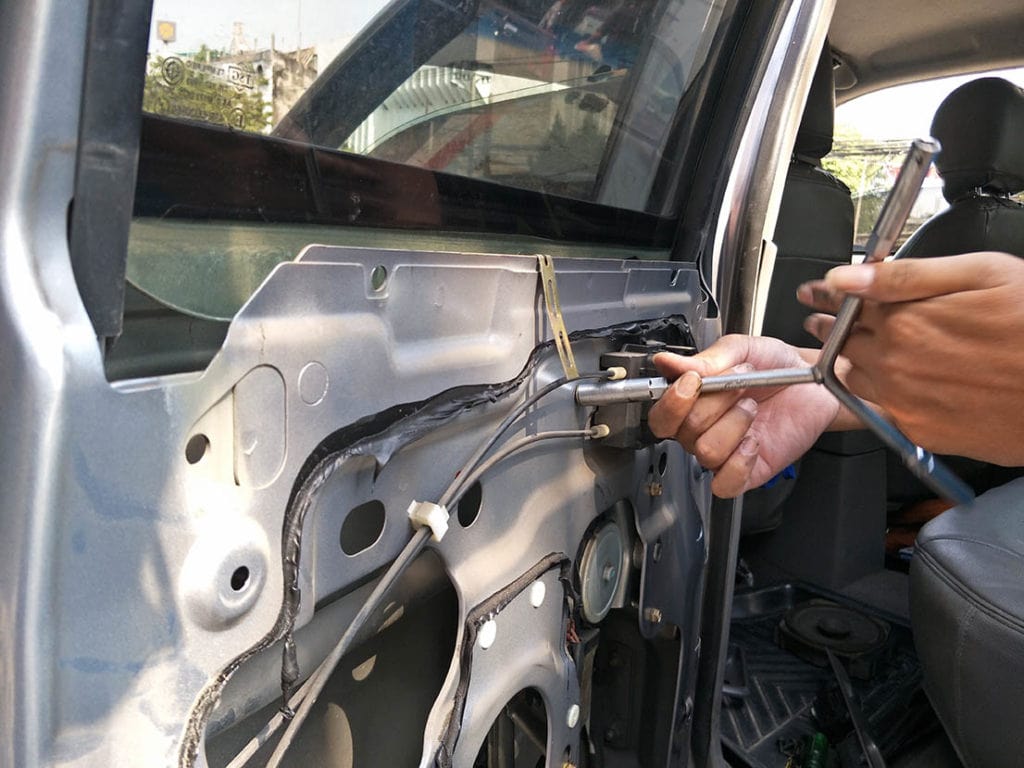What Is Frame Damage on a Car? Types & FAQs
-

- Last updated:

Your car’s frame, also called the chassis, supports all mechanical components, internal parts, weight, and shape of your vehicle. While passenger safety is essential to consider after a collision, structural integrity follows closely.
So, what is frame damage on a car, and how challenging or expensive is it to repair?
Frame damage refers to foundational damage that compromises your vehicle’s structural integrity, usually due to collisions or rolls. The non-cosmetic detriment affects the metal foundation that holds your car’s body, wheels, engine, and other components. Think of this frame as your car’s skeleton as you read further in this article to discover exactly what it entails.
How Does Frame Damage on a Car Happen?
If you walk unharmed from a motor accident, your car may not be as lucky, especially if it is a front-end collision. Often, you’ll find your fenders crumpled, and the front grill smashed up into the radiator, not to mention a complete shedding of all glass in your headlights.
A collision may also happen sideways or from the back, and your vehicle may suffer frame damage. That means your car’s structural frame¹ is compromised, making it immobile or unsafe to drive without comprehensive repairs.
Frame damage can also happen due to alterations made to the structure of your car or if other components obstruct your car’s skeletal framework. It’s typically a huge deal since this is the foundation of your vehicle’s integrity and will result in misalignment and safety issues.
- Side impact collision
- Rear-end accidents
- Crashes while merging
- Multi-vehicle collisions
- Tip overs or rolls

Your car’s frame offers the primary structural support for your vehicle, ensuring drivability and the safety of passengers. Damage can occur based on the depth or extent of bending, crumpling, or denting that will compromise your car’s integrity and alignment support.
What Are the Different Types of Frames on a Car?
The average driver has a car accident once every 18 years, meaning you may experience multiple accidents in a lifetime. While there are numerous types of frame damage to vehicles, the most common involve disfigurement or destruction of ladder and unibody frames.
Common types of car frames include:
1. Unibody Car Frames
Knowing the type of frame your car sits on helps determine the damage your vehicle is susceptible to and what its repair entails. Unibody frames are often the structural skeleton of new vehicles, but your car can have an offset, ladder, or perimeter frame if it’s a truck or SUV.
In unibody construction, the entire frame is in one piece, while ladders consist of a skeleton on which the car’s body is placed. While these frames are sturdy enough to suffer some devastation, they have areas prone to bending or other forms of impairment after an accident.
Due to ease of production, most cars have a unibody frame, often made from aluminum or carbon fiber, to increase performance¹ and fuel efficiency. Besides working best for driving applications, this frame absorbs impact crashes better than other types.

2. Ladder Type of Frame
The ladder frame is also known as the on-body frame, often found in trucks and older cars. Its attributes include a separation between the frame and body piled up on each other and connected by mounts.
The layout of a ladder frame is such that two symmetrical rails stretch throughout the length of the car while another holds the drivetrain and power units. On top of this, the third layer consists of the car’s body, ensuring that the frame receives minimal damage in the event of an accident.
Modern SUVs and trucks feature the ladder frame type due to their off-road capabilities and towing and hauling. It’s the best structure to support the twists and turns required to navigate uneven terrain as the frame is built with sturdier heavier materials.
The downsides of the ladder frame include higher resistance due to its build strength, which translates to low maneuverability and higher fuel consumption. It’s also not as safe during a crash as the unibody frame, plus repairing it after an accident is more expensive.
Which Parts on a Car’s Frame Are Susceptible to Damage After an Accident?
After an accident, or when your car sustains other on-road damages, it’s essential to consider the type of repairs that would make it safe and roadworthy again. But light bodywork is in a different league than repairing frame damage, and you may find out your car’s been totaled.
That’s because the steep costs of frame damage repair may surpass the car’s value, especially if you’re driving an older vehicle. Repairing frame damage is also a cumbersome process, where body shop technicians must use realignment tools to rectify bends or dents.
- Core Support: The front part of your car’s frame supports the radiator and frontal grill. Some vehicles have this part bolted on, so it’s removable and repairable without affecting the rest of your vehicle’s structural integrity.
- Strut Tower: At the four corners of your car, the frame contains strut towers, often part of the rear quarter or front apron panels. Damage to this area affects the suspension and alignment of your vehicle.
- Unirail: These are symmetrical beams found at the front and back of your car’s frame, and they’re the most significantly robust parts of its foundational structure. Other components of the frame, such as the apron or the suspension, are welded onto the unirails.
- Firewall: Your car’s engine compartment is separated from the cockpit by the firewall, making upfront of a unibody frame. Alongside the strut towers, unirails, apron, and core support, this section offers the most structural integrity to your vehicle.
- Apron: The apron includes the front inner fender on two sides of your car, the front extending to the core support while the rear supports the firewall and strut tower.
- ABC Pillars: While smaller cars have three ABC support pillars, minivans and some trucks have a fourth one labeled D-pillar. They’re vertical supports for your vehicle’s frame, alphabetically named to indicate their location within the framework.
- Floor Plan: Several unibody or ladder-style frame cross members have a metal sheet welded to form the floor. Holes and grooves in the floor plan give the car’s electrical wiring and drivetrain access.
- Quarter Panel: The side panels of your car are supported by the quarter panel, forming the wheel wells and supporting the gas tank in most vehicles. Some cars have metallic quarter panels, but others make them from carbon fiber or fiberglass.
- Rear Support: The frame’s rear section comprises two unirails in most cars, a front floorboard for the rear bumper, and spare wheel support.
- Rocker Panel: Your car’s doors get support from rocker panels on both sides of the vehicle, maintaining their rigidity and alignment when closed.
Several parts work together in the most common car frames, supporting a car’s core functions and giving it stability and structural integrity. Since damage on these components includes bends, warps, and dents, their damage extent will determine whether your car’s frame is repairable or beyond repair.

What Is Considered Frame Damage on a Car?
Frame damage can happen after a fender bender or because of a serious collision. Minor panel damage won’t affect the vehicle’s structural integrity but bending, cracking, or warping can have disastrous results if not fixed quickly and properly.
After an accident, bent alignment support or compromised beams and panels happen in the areas of your vehicle’s frame designated as crumple zones¹. These areas absorb kinetic energy and will fold or crump to protect the car’s passengers from lowering the rate of injuries or fatalities.
Three types of frame damage may be diagnosed when you take your car to the body shop for repairs.
1. Sagging or Twisted Frame
A twisted or sagging frame happens after a head-on collision or if you’re rear-ended in an accident. That caused the frame to crumple downward, up, or sideways on itself, distorting the structure and compromising your vehicle’s safety.
You’ll notice irregular tire or suspension wear if sagged or twisted frame damage isn’t corrected. While such damage may prove difficult to detect due to the natural crumple design of the frame, repair by a professional is essential. Otherwise, it may spread, cause component failure or fail to protect you and your passengers in the event of another collision.
2. Sway Frame Damage
Sway means leaning to one side, and as such, you’ll feel your vehicle driving in a misaligned manner if the frame is damaged this way. It occurs when the area of impact is a corner, and it’s easy to detect since you can’t ignore the dangerous loss of control.
If you notice a lack of alignment or your car favoring one side due to sway damage, take it for repair, as your safety is compromised¹. You may also notice vibrations coming from the vehicle’s structure, which could lead to transmission problems if left unchecked.

3. Mashed Frame Damage
A rear-ended vehicle or a head-on collision will likely suffer mashed frame damage as crumple points fold into themselves. Your car will feature some distortion on its body, whether wrinkles inside the hood seat, warps on fenders, or rails that won’t align with doors.
It’s essential to give your car a once over, even after its bodywork has had post-accident repairs, especially after front, side, or rear-end collisions. That way, you’ll notice signs of frame damage and have it repaired before it escalates into further structural deterioration that places your safety at risk.
How Do You Tell When Your Car Has Frame Damage?
Many cars today are built on the unibody frame, but that wasn’t always so, as ladders were more common. But these were designed sturdier than today’s options, although they were considered beyond repair should the inevitable accident leave them bent or warped.
Due to design efficiencies, modern car frames are built less on robustness and more on safety, performance, and fuel consumption. That means within the frame are several crumple zones that assist in absorbing collision impact¹, whether at low or high speeds.
While a car may normally run with hidden damage, how can you tell when your car’s frame is damaged? Although it doesn’t require that much force for your car to have frame damage, some signs to watch out for include the following:
- Visible bending and warping
- Wheel and suspension alignment is off
- Strange noise from underneath the car
- Lack of correct tracking of wheels
- Door or hood panels that don’t line up
- Uneven wear on tires and suspension

Let’s look at some of these symptoms in detail so you’ll learn how to identify frame damage.
Visible Bending and Warping
After an accident, possibly involving a collision or if your car had tipped or rolled over, check for any bends or warp damage. You can move around your vehicle and see if there are creases on the bodywork or signs of cracks that betray internal frame bending.
It’s vital to check the underside of your car for signs that the frame is compromised or if there are parts, components, or nuts missing. Once you find bends, warps or cracks, have your vehicle repaired immediately, as this could lead to further and more serious problems.
The Wheel and Suspension Alignment Are Off
If you’re driving your car after a collision, however minor, you may notice your vehicle constantly pulling to one side. You may also find that your wheels or suspension needs to be better aligned, which is noticeable when you study the treads or change your shock absorbers.
Realignment at your car mechanics may solve this issue, but if it persists, then you most certainly have frame damage. Have the vehicle’s frame thoroughly checked and repaired before attempting to drive it, as misalignment may result in safety and tire or suspension wear issues.
Strange Noise from the Car
A damaged car frame will consistently result in noises such as creaks and squeaks coming from your vehicle’s front, sides, underside, or rear. It indicates that your car’s structural integrity is compromised, especially if you’ve recently had a collision.
Although noise is normal in many cases due to on-road stress¹, checking your car for frame damage is essential. Take immediate action before the problem exacerbates, resulting in more expensive fixes.
Uneven Wear in Wheels and Suspensions
When your car frame is bent or warped, it leads to uneven wear of its wheels and shock absorbers. That’s because damage to its structure caused the weight to shift to one side, and you’ll notice the side with issues pretty soon.
It’s also possible to feel that the wheels or suspension system favors one side and needs to connect better with the road when driving. The damaged frame causing this unevenness will likely make you lose control and lead to another accident, so have it checked and repaired.
Is Fixing Frame Damage on a Car Expensive?
Frame damage repair costs are dependent on the extent of how bent, warped or broken your car’s frame is. A dented panel or broken apron may prove easier to fix than if a unibody frame’s strut tower or core support needs fixing.
Technically, most frame damage repair is challenging since your body shop will likely have to undo the entire vehicle’s structure. Depending on the model and intricacy of reaching the affected part, you can repair your car for a little over what it takes to do body repairs.
However, some frame components, such as the rails, radiator support, or pillars, require machining cuts, welding, and strict integrity checks, which may cost more. Sometimes, it’s easier to replace the damaged frame with a whole unit that’s never been involved in a collision.
Frequently Asked Questions (FAQs)

Is frame damage on a car repairable?
Yes, frame damage, depending on the extent, is fully repairable if your car hasn’t been written off after an accident. It may be expensive as it requires cutting into the vehicle’s structure or bolting on another frame part altogether.
What are the major causes of frame damage?
Several occurrences, including collisions, curb impacts, running into potholes, or rolling over, are the significant causes of frame damage on a car.
Which part is considered the frame of a car?
The frame or chassis of a car is the internal support structure¹ onto which the body, drive train, transmission, and other components are placed. It’s a metallic or carbon fiber framework that gives your vehicle structural integrity and is essential for your safety.
Can I sell my frame-damaged car instead of repairing or salvaging?
If the amount of frame damage makes repairs complicated, you can sell your car for less than its blue book value. However, it’s vital to note that if a car is transferred with such damages, it appears on its history affecting its value permanently.
Conclusion
Hopefully, this guide lets you know what frame damage on a car is and how to go about having it fixed so your car is roadworthy and safe. It’s essential to note that this feature is vital to your safety and the correct working of your vehicle, not to be ignored or taken lightly when damaged.
Driving your car with frame damage makes the component weaker so that it’s not as efficient in protecting you from injury in the event of a collision. Dealing with the damage also helps maintain your suspension and tires, preventing uneven wear and another component failure.
Featured Image Credit: PublicDomainPictures, Pixabay
Contents

